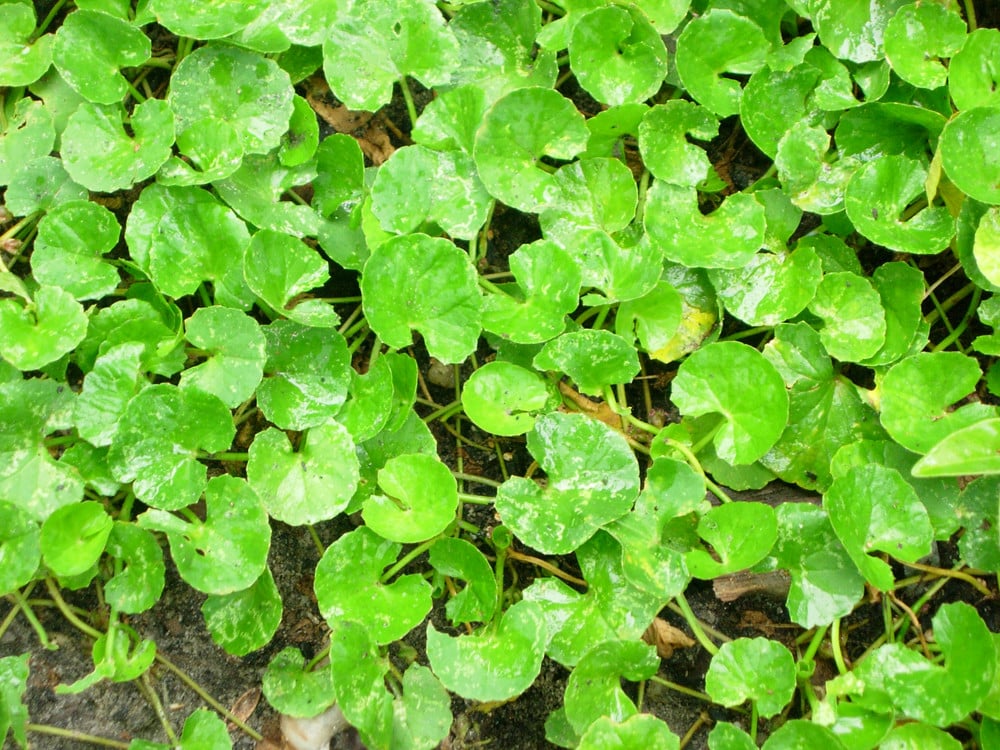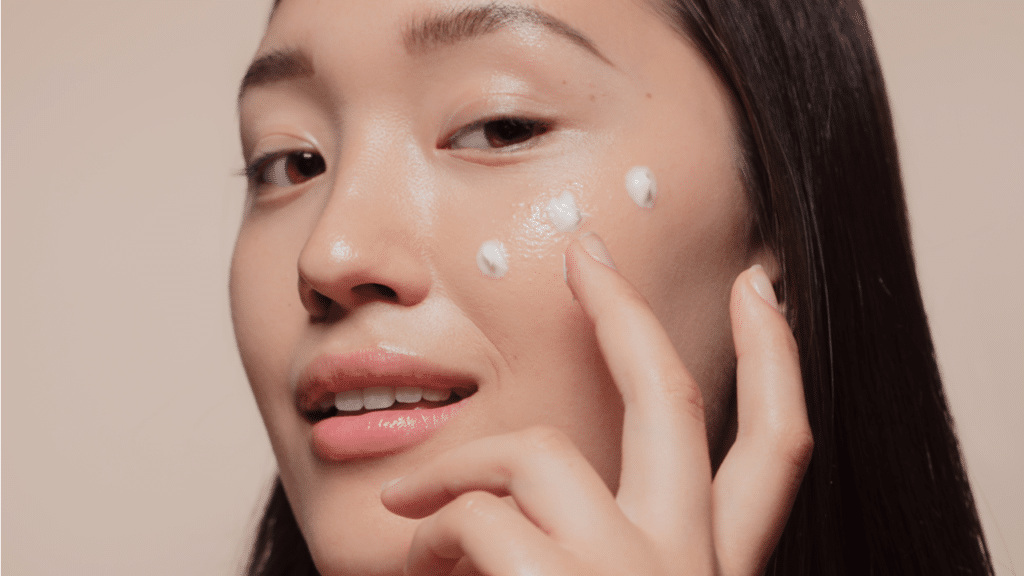written by Allie G, Ph.D. | Updated on February 11th, 2025 at 8:35 pm | Published on April 3rd, 2024 at 6:00 pm |
Have you been missing out on a timeless skincare secret that could help you achieve flawless skin? Is Centella Asiatica extract an ingredient you need in your routine? If you’re a skincare enthusiast, especially in the realm of Korean skincare, you might already be familiar with Centella Asiatica. From soothing irritation to boosting collagen, Centella Asiatica extract is an increasingly popular ingredient. But what does the science say? Let’s explore the benefits of Centella Asiatica for skin and answer your burning questions.
What is Centella Asiatica | Composition | Wound Healing | Anti-Inflammatory | Anti-Aging
What is Centella Asiatica?
Centella Asiatica, also known as Gotu Kola, Pennywort, or Wild Violet, is a botanical herb frequently found in Korean skincare products. This herbaceous, perennial plant thrives in the wetlands of Asia and serves as a medicinal herb in skincare and a culinary ingredient. Visually, Centella Asiatica features long, round, green, veiny leaves and may produce white or reddish flowers.

The Chemical Components of Centella Asiatica Extract
Once harvested, Centella’s chemical compounds are extracted and transformed into centella asiatica extract that is used in skincare formulations. The primary heroes behind Centella’s benefits are chemicals called triterpenoids. Triterpenoids can make up 1-8% of Centella Asiatica extract. Additionally, Centella contains centellose, centelloside, and madecassoside, which are also beneficial in skincare.
Thanks to these triterpenoids, Centella enjoys a prominent place in the world of natural skincare ingredients. Companies often tout its benefits, claiming it can combat aging, reduce inflammation, and promote healing. Let’s dive into the scientific evidence supporting these claims.
Potential Benefits of Centella Asiatica for Skin
Centella Asiatica for Skin: Wound Healing Powerhouse?
The benefits of triterpenoids in Centella resemble those of collagen in skincare when it is injected into the skin. Research indicates that triterpenoids promote wound healing and collagen production. It’s important to note that many studies used oral or subcutaneous dosages of Centella, which came into contact with cells during wound healing experiments. This differs from the topical application typically used in skincare.
One study I came across applied Centella Asiatica extract topically, combining it with another well-known skincare ingredient, vitamin C, and compared it to a control group that used a cream with no active ingredients. Consequently, it’s challenging to pinpoint whether the benefits were from the Centella or the vitamin C.
While some studies suggest Centella Asiatica extract may promote collagen production, especially in wound healing contexts, more research is needed on its topical application for general anti-aging.
Centella Asiatica for Skin: Anti-Inflammatory Champion
Chemically, triterpenes function as antioxidants, molecules that combat cell oxidation. This function is linked to anti-inflammatory properties. Whenever you want to prevent damage or you want to brighten your skin and fade dark spots; antioxidants are a great addition to your skincare routine.
The antioxidant properties of Centella Asiatica extract may help fade dark spots over time by reducing inflammation, but it is not a guaranteed solution.
Centella Asiatica for Skin: Anti-Aging Effects- The Jury’s Still Out
In contrast to its anti-inflammatory claims, the anti-aging benefits of Centella Asiatica extract are not as definitive. Research suggests that triterpenes can activate an apoptosis pathway, causing cells to die in a programmed manner through chemical signals. This leads to cell turnover. This would mean Centella Asiatica functions similarly to a retinoid. However, there is no concrete evidence supporting that claim.

The evidence for Centella Asiatica extract’s anti-aging benefits is less conclusive than for its anti-inflammatory effects.
Answers to the Most Common Questions About Centella Asiaticas Benefits for Skin
To sum it up, the oral and subcutaneous application of Centella extract has demonstrated positive outcomes. However, when used topically, substantial evidence doesn’t support the same benefits. As this ingredient gains popularity, so do the studies on its effectiveness. Centella Asiatica extract is primarily known for its soothing and anti-inflammatory properties. It may also promote wound healing and have some antioxidant benefits.
Using Centella Asiatica Skincare:
If you want to use Centella Asiatica skincare in your routine, there is no reason to have reservations. Generally, it is okay to use Centella Asiatica in your daily routine. It is considered safe for daily use, but it is always best to patch-test new products.
While it is rare, excessive use of Centella Asiatica extract in your skincare round could potentially lead to irritation. As you introduce new Centella Asiatica skincare products in your routine, listen to your skin, and do not use products that cause your skin to burn or itch. It does not matter if you use Centella Asiatica in your morning or evening routine. You can use it whenever it fits best into your skincare routine.
So Does Centella Asiatica Extract Play Well With Other Popular Skincare Ingredients
Today, there are no ingredients that you cannot mix Centella Asiatica with. Centella Asiatica pairs well with Vitamin C because they are both antioxidants. This can help protect your skin from hyperpigmentation and premature aging. However, it is not a substitute for sunscreen. Additionally, it can be used with hyaluronic acid to leave your skin feeling hydrated and soothed.
Who Should Use Centella Asiatica?
Centella Asiatica extracted is generally well tolerated by all skin types. Whether your skin is sensitive, sensitized, or on the mend, it can be a great soothing ingredient to incorporate into your routine. If you have acne-prone or oily skin, centella asiatica extract is not comedogenic and is not typically associated with purging. If you do experience breakouts after using it, it could be a reaction to another ingredient or the product as a whole. Similarly, Centella Asiatica extract should not burn your skin, and this could also be related to an allergic reaction or a hypersensitive skin barrier that needs a break from products.
If you have dry skin, Centella Asiatica skincare products should not dry your skin out. However, Centella Asiatica is not a humectant like hyaluronic acid or glycerin, so it’s not a substitute for a hydration-boosting ingredient. It is often included in hydrating toners alongside hyaluronic acid or glycerin but serves an entirely different function.
So What’s the Final Verdict on Centella Asiatica Extract For Your Skin
Centella Asiatica extract is a fascinating ingredient with a rich history of use. While research suggests potential benefits, particularly in wound healing and inflammation reduction, it’s essential to approach anti-aging claims cautiously. More studies on topical application are needed to understand its long-term effects fully. However, its well-established soothing properties make it a promising ingredient for those seeking relief from irritated or sensitive skin.
About the Author: Hi there, skincare sleuths! I’m Dr. Allison, a science enthusiast with a Ph.D. in Materials Science and Engineering. Though my career path may have wandered, my fascination with how things (including skincare!) interact with the body never left me. That’s why I founded Relatable Science – a refuge from confusing claims and jargon. Here, I translate the research behind ingredients like Centella Asiatica (today’s botanical star!) into actionable advice for you. My articles? Powered by deep dives into peer-reviewed studies, ensuring you get the latest on its potential to soothe, heal, and maybe even boost collagen. Ready to ditch the confusion and embrace informed choices? Let’s untangle the science of Centella Asiatica, one research paper at a time, and unlock the radiant skin you deserve!
Article Sources
Hashim, P.; Sidek, H.; Helan, M.H.M.; Sabery, A.; Palanisamy, U.D.; Ilham, M. Triterpene Composition and Bioactivities of Centella asiatica. Molecules 2011, 16, 1310-1322. https://doi.org/10.3390/molecules16021310
Kamonwan Jenwitheesuk, Porntip Rojsanga, Bowornsilp Chowchuen, Palakorn Surakunprapha, “A Prospective Randomized, Controlled, Double-Blind Trial of the Efficacy Using Centella Cream for Scar Improvement“, Evidence-Based Complementary and Alternative Medicine, vol. 2018, Article ID 9525624, 9 pages, 2018. https://doi.org/10.1155/2018/9525624
Bylka, W., Znajdek-Awiżeń, P., Studzińska-Sroka, E., Dańczak-Pazdrowska, A., & Brzezińska, M. (2014). Centella asiatica in Dermatology: An Overview. Phytotherapy Research, 28(8), 1117-1124. https://doi.org/10.1002/ptr.5110

1 Comment